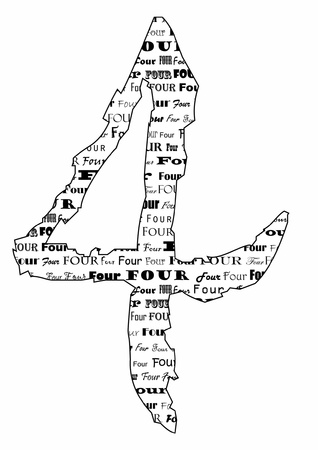1. Introduction to The Fool Card
Within the illustrious tradition of tarot, The Fool card holds a unique and distinguished position as the first of the Major Arcana. It is often numbered as zero, symbolising both nothingness and infinite potential—a paradox that encapsulates its deeper meanings. Visually, The Fool is depicted as a carefree traveller, frequently shown with a small bundle over his shoulder, poised at the edge of a precipice, gazing upwards with trustful innocence. At his feet, a loyal dog serves as both companion and subtle warning, urging caution amidst adventure.
The symbolism woven into this card is richly evocative. The sun shining brightly above suggests optimism and enlightenment, while the winding path ahead represents the journey of life itself—unpredictable yet full of promise. In the context of the tarot tradition, The Fool embodies new beginnings, spontaneity, and the courage to embark upon the unknown. It reminds us that every grand story starts with a single step, often taken in faith rather than certainty. Through its vivid imagery and core meanings, The Fool invites us to embrace lifes adventures with an open heart and an eager spirit.
2. Symbolism and Imagery of The Fool
To truly appreciate the essence of The Fool card within the Major Arcana, one must delve into its intricate symbolism and imagery—a tapestry woven with meanings both universal and distinctly British. At first glance, The Fool is often portrayed as a youthful traveller on the verge of a cliff, carrying a modest satchel, accompanied by a loyal dog. Each element depicted in the card serves as a potent symbol, inviting us to reflect upon not only personal beginnings but also motifs deeply rooted in British iconography and folklore.
The Traditional Symbols of The Fool Card
| Symbol | Traditional Interpretation | British Cultural Reflection |
|---|---|---|
| The Cliff | Represents risk, new journeys, and the threshold between the known and unknown. | Echoes ancient tales of venturing beyond the village green—akin to Arthurian quests or pilgrimages to Canterbury. |
| The Satchel | A symbol of simplicity and faith; carrying only what is essential for the journey ahead. | Reminiscent of the humble pack carried by British wayfarers, from medieval wanderers to Victorian ramblers. |
| The White Dog | Loyalty, instinct, and guidance along the path. | Parallel to faithful companions in British lore—think of loyal hounds in Celtic myths or stories such as Greyfriars Bobby. |
| The Feathered Cap | Freedom of thought, innocence, and spiritual openness. | Evocative of Morris dancers hats or Robin Hood’s plume—a nod to playful rebellion and folk tradition. |
| The Sun | Optimism, vitality, and hope for the future. | An emblem of new dawns much celebrated in British poetry and seasonal festivals like Beltane. |
British Iconography Intertwined with Tarot Tradition
The imagery of The Fool resonates with numerous elements found in British art and folklore. The notion of setting forth on an unknown path is echoed in countless British ballads and fairy tales—the hero or heroine departing from home with little more than trust in fate. Even the landscape behind The Fool often mirrors the rolling hills and misty moors that define much of Britain’s countryside, evoking a sense of wonder tinged with caution. These visual cues serve not only as artistic flourishes but also as cultural signifiers that root The Fool firmly in local tradition while connecting it to broader human experience.

3. The Fool in British Folklore
Within the tapestry of British folklore, The Fool card finds intriguing parallels with iconic figures whose stories have echoed through centuries. These characters, such as the jester, the Green Man, and wandering minstrels, each embody aspects of The Fool’s essence—innocence, spontaneity, and a deep connection to both earthly and spiritual realms.
The Jester: Wisdom in Wit
The jester, often seen at medieval courts, is perhaps the most immediate analogue to The Fool. While outwardly playful and seemingly frivolous, the British jester held a unique position of power: their humour veiled wisdom, and their antics often revealed truths others dared not speak aloud. Much like The Fool card’s symbolic journey into the unknown, the jester’s role was to challenge conventions and remind royalty—and by extension, society—of life’s unpredictability and need for humility.
The Green Man: Renewal and Wildness
Another evocative figure is the Green Man, found carved in ancient churches and whispered about in rural tales. Cloaked in foliage, the Green Man represents nature’s untamed spirit—a force of constant renewal and growth. His presence in British lore mirrors The Fool’s leap into new beginnings, embracing change with trust rather than fear. Both figures invite us to reconnect with our primal instincts and to trust the cyclical patterns of life.
Wandering Minstrels: Songs of Adventure
Wandering minstrels and troubadours also share kinship with The Fool archetype. Travelling from village to castle, these storytellers lived on the edge of society, carrying news and legends while relying on the generosity of strangers. Their journeys reflect The Fool’s open-hearted approach to life—taking risks without guarantees, guided by faith in humanity’s kindness and an unquenchable thirst for discovery.
A Unifying Thread
Together, these folkloric figures weave a rich narrative that resonates with The Fool card’s deeper meanings. Whether delivering hard truths through jest, celebrating nature’s wild cycles, or wandering with little more than a song, they teach us that embracing uncertainty can be an act of profound courage and wisdom—a lesson rooted deeply within both tarot tradition and British cultural heritage.
4. British Perspectives on Innocence and Adventure
The Fool card, as the harbinger of new journeys in the Major Arcana, finds intriguing parallels within British cultural attitudes towards innocence, courage, and risk-taking. In traditional British society, there is often a nuanced appreciation for both the virtues and follies of naivety—where innocence can be endearing, but also a gentle warning against heedlessness. The British tendency to value ‘a good sport’—someone who steps forward with curiosity and humility, even in the face of uncertainty—mirrors the essence of The Fool’s leap into the unknown.
Naivety: A Double-Edged Sword
In British folklore and literature, naivety is frequently depicted as a quality that invites both sympathy and caution. Consider characters like Pip from “Great Expectations,” whose innocent aspirations lead him through trials that ultimately foster wisdom. Similarly, The Fool embodies a sense of pure-heartedness—a willingness to trust in the journey itself. Yet, this openness must be tempered with discernment, a lesson echoed in countless British tales where innocence encounters the world’s complexities.
Courage and Risk-Taking: The Quiet Resolve
British culture has long celebrated understated bravery—the quiet resolve to face adversity without fanfare. This ethos aligns with The Fool’s symbolism; venturing forth not because one is fearless, but because one trusts in possibility. From Sir Ernest Shackleton’s Antarctic expeditions to everyday acts of resilience chronicled in oral histories, courage often means embracing risk while maintaining humility.
Comparison Table: The Fool Card and Traditional British Attitudes
| Aspect | The Fool Card Symbolism | British Perspective |
|---|---|---|
| Naivety | Open-heartedness; lack of preconception | Appreciated for honesty; cautioned against gullibility |
| Courage | Braving the unknown; faith in new beginnings | Admired when quietly expressed; valued over bravado |
| Risk-taking | Stepping off the cliff; trusting intuition | Respected when calculated; balanced by pragmatism |
Life Lessons: Walking the Fine Line
The interplay between innocence and experience is central to both The Fool card and the British cultural psyche. Life lessons drawn from these traditions encourage individuals to venture forth with an open heart but also with eyes wide open—appreciating the adventure while recognising potential pitfalls. Ultimately, The Fool reminds us that every journey begins with a single step, and that embracing both wonder and wisdom is key to personal growth.
5. Life Lessons from The Fool
The Fool, as the harbinger of new beginnings in the Major Arcana, brings forth a wealth of wisdom that transcends eras and borders. In the context of contemporary British life, The Fool’s teachings are particularly resonant, offering guidance for personal growth amidst the uncertainties of a fast-changing world.
Embracing New Journeys with Courage
The Fool encourages us to step forward into the unknown with an open heart, much like setting out on a ramble across the rolling hills of the British countryside—unsure of what lies beyond the next stile but trusting in our journey. This spirit is vital for modern Britons, who often face societal and economic shifts. The card reminds us that every venture, be it a career change or a move to a new city, begins with one brave step.
Trusting in Innocence and Spontaneity
There is an innocence to The Fool that aligns with British folklore’s “holy fool” figures—simple souls whose naivety leads to unexpected wisdom. In our structured society, The Fool teaches us to value spontaneity and trust our instincts, even when convention urges caution. Sometimes, a leap of faith is precisely what is needed to discover new opportunities or hidden strengths.
Resilience in the Face of Uncertainty
The unpredictability embodied by The Fool mirrors the unpredictability of British weather: sunshine can turn to rain without warning. Yet, just as we carry on regardless—umbrella in hand—the card advises us to meet life’s uncertainties with resilience and adaptability. Every stumble or misstep is not failure but part of our ongoing education.
The Joy of Living in the Present
Finally, The Fool invites us to savour each moment rather than becoming mired in worries about future outcomes. Much like enjoying a cup of tea during a quiet afternoon, there is wisdom in being present and finding joy in simple pleasures. In this way, The Fool offers timeless counsel: let go of burdensome expectations and allow yourself to dance lightly through life’s many chapters.
6. The Fool’s Journey in Modern Britain
The archetype of The Fool, as depicted in the Major Arcana, remains remarkably resonant within the context of contemporary British society. In an age marked by rapid change and uncertainty, many individuals find themselves standing at the threshold of new beginnings, not unlike The Fool poised at the cliff’s edge. This enduring symbolism speaks to those moments when one must trust in their intuition and embrace the unknown, despite societal pressures for caution and conformity.
Everyday Choices Reflecting The Fool’s Spirit
Across the United Kingdom, from bustling London boroughs to tranquil Lake District villages, Britons face daily choices that echo The Fool’s journey. Whether it is embarking on a new career path, moving to a different city, or simply choosing to express one’s authentic self in a world that often prizes tradition over innovation, these decisions mirror the card’s invitation to take risks with an open heart. The British appreciation for both self-deprecating humour and quiet resilience finds kinship with The Fool’s blend of innocence and courage.
Navigating Challenges with British Fortitude
The Fool reminds us that life’s challenges—be they economic uncertainty, shifting political landscapes, or personal setbacks—are invitations to step forward with hope rather than fear. In true British fashion, there is a sense of “keeping calm and carrying on,” but also an underlying recognition that each individual possesses the agency to redefine their story. The Fool encourages embracing adventure and learning from missteps, reflecting the national value placed on perseverance and adaptability.
Revealing Insights about Society
On a broader level, The Fool’s journey shines a light on how British society negotiates tradition and modernity. As communities evolve and old certainties give way to new realities, the archetype invites reflection on what it means to live authentically amid change. It suggests that wisdom often lies not just in caution or expertise but in maintaining a willingness to explore, question, and grow—qualities that continue to shape Britain’s cultural tapestry.
In conclusion, The Fool card offers more than mere symbolism; it serves as a gentle guide through the complexities of modern British life. By honouring both vulnerability and curiosity, it inspires individuals and communities alike to meet life’s crossroads with optimism and grace.


